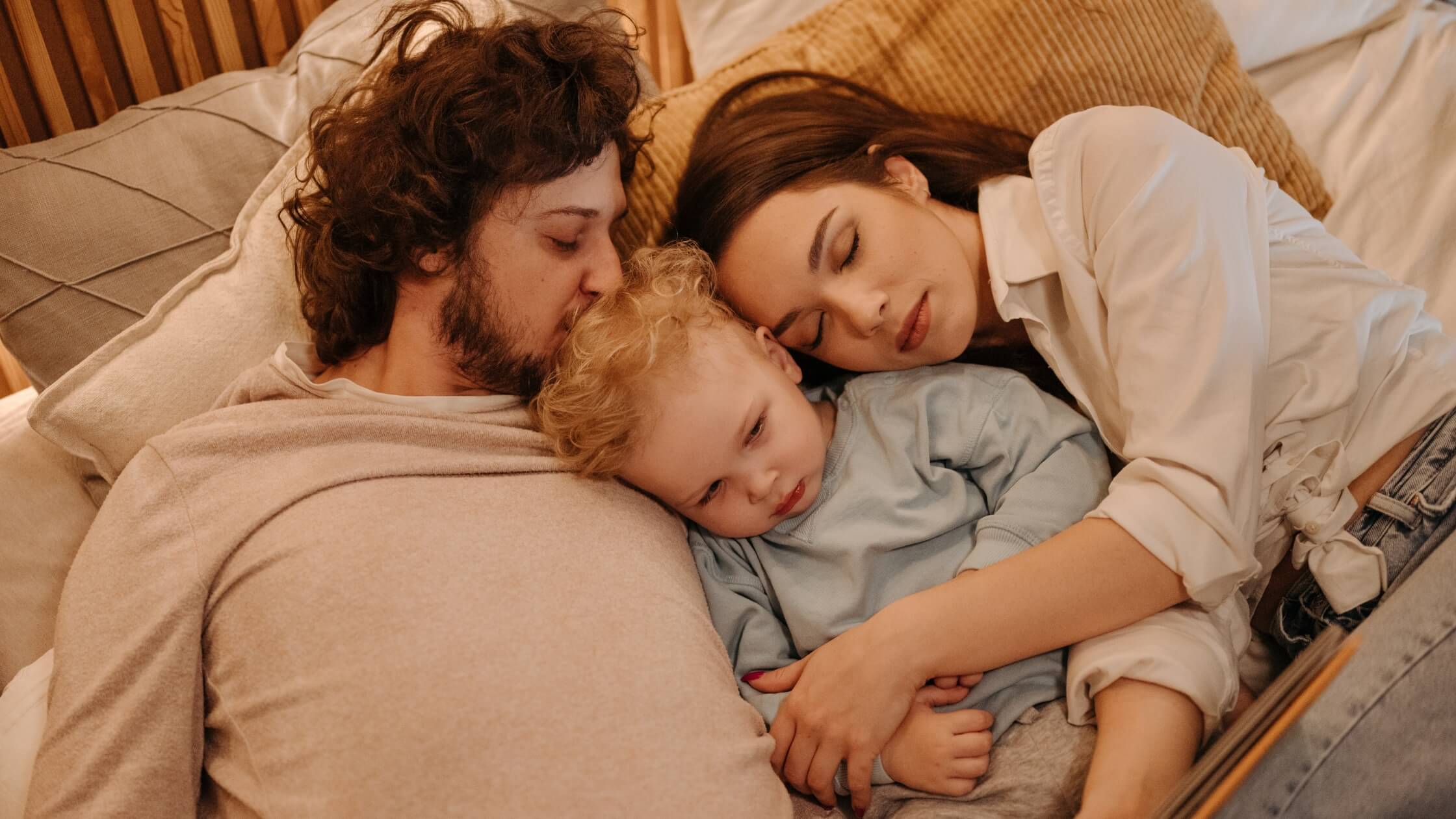We’re definitely not trying to kick up a dust cloud by bringing up a topic that can be seen as controversial to some. We just wanted to share our thoughts and recommendations on this subject and to hear your thoughts and views as well. This is definitely a topic that is ripe for discussion and we’d love to hear about your experiences. The subject at hand is that of “co-sleeping,” specifically co-sleeping with an infant or young baby. A lot of ink has been spilled on this topic and in today’s article, we’re going to spill a little bit more to help inform and encourage our audience. Please comment and share your thoughts!
Our Stance On Co-Sleeping
We do not recommend co-sleeping (aka having the child sleep in the same bed with a parent or parents) for children under 1 year of age, especially when they are very small. The American Academy of Pediatrics also recommends the same. They don’t promote or support co-sleeping during that age range for any reason. The risks are just too severe to justify the minimal benefits of the practice. During a co-sleeping situation, a parent could easily roll over and suffocate the infant without even waking up. The chances of SIDS also skyrockets as well since it is very easy for a blanket or pillow to be moved over the child’s face which can cause breathing problems and fatal choking. All in all it is very risky to co-sleep with your infant, especially during the first year and even beyond that, depending on the size and sleeping habits of the child and parents.
What Do We Recommend Instead?
We understand more than most, that there is a real need and comfort sometimes with having your newborn in the same room with you at night while you (try) to sleep, and we can definitely say that we do recommend sleeping in the same room with your child, just not in the same bed. Studies have shown that room sharing actually helps with your child’s development and can help with your peace of mind as a parent since you can be very close to your child in case anything goes wrong. It can also reduce the risk of SIDS because babies are less likely to get into deeper sleep stages since they are able to hear and smell their parents or caregiver while in the same room with them. Another SIDS risk factor reducer from room sharing is that parents are there to hear if there are any breathing or choking issues if they arise. If the child is in another room, that could go unnoticed.
Best Practices For Room Sharing At Night
If you’d rather room share than co-sleep (highly recommended!) or if your child has been sleeping in a crib in another room and you’d like to bring them into your room, then here is what we recommend. We advise purchasing a bassinet that can be strategically placed by the bedside to allow easy access to the child but ensure that the baby separates from the bed itself.
Again, while in this bassinet, we recommend that the child be on their back without any pillows or blankets (only appropriate sleep sacks) in order to reduce the risk of SIDS.
While some bassinets can connect to the bed to bring even more ease of access for comforting and feeding, this is not the most ideal practice. There is still the risk of a blanket ending up over the baby ‘s face. It is also possible that the baby could roll into the crevice between where the attached bed and mattress meet.
Conversely, If You’d Like To Transition Your Little One Out Of Your Room. Here Are Some Tips.
- Spend time in the new space for 4-7 days before putting the child to sleep in the new room. Books, gentle playtime, diaper changes and allow baby to play in there while organizing or putting away laundry etc.
- Place a mattress on the floor next to the parents’ bed (older child).
- Transfer to the child’s room with a mattress on the floor. A parent can sleep next to the child initially, then on the floor next to the bed, then move out of the room (older child).
- If the baby is in a crib, parents can use a mattress initially so that they can be there as baby falls asleep, then again to reassure them if there are awakenings throughout the night.
- Keep routines the same as well as sleep cues like: white noise, black out blinds, and reduced home activity/noise.
Before You Go
We hope you enjoyed learning about tips for sleeping arrangements for you and your child. If you would like to know more about this, our sleep programs or any of our excellent newborn care services, we are happy to help. Just contact us and we can go over your options and help you find the best path for your little one. We hope these tips have helped you along your journey. If you have any questions about helping your baby to sleep better, or about your baby in general, please reach out to us HERE. We are experts in all things baby and sleep and would love to help!
If you have questions about your child, please don’t hesitate to contact us. We would love to help. Please reach out to us here! We always look forward to hearing from you.
![]()
